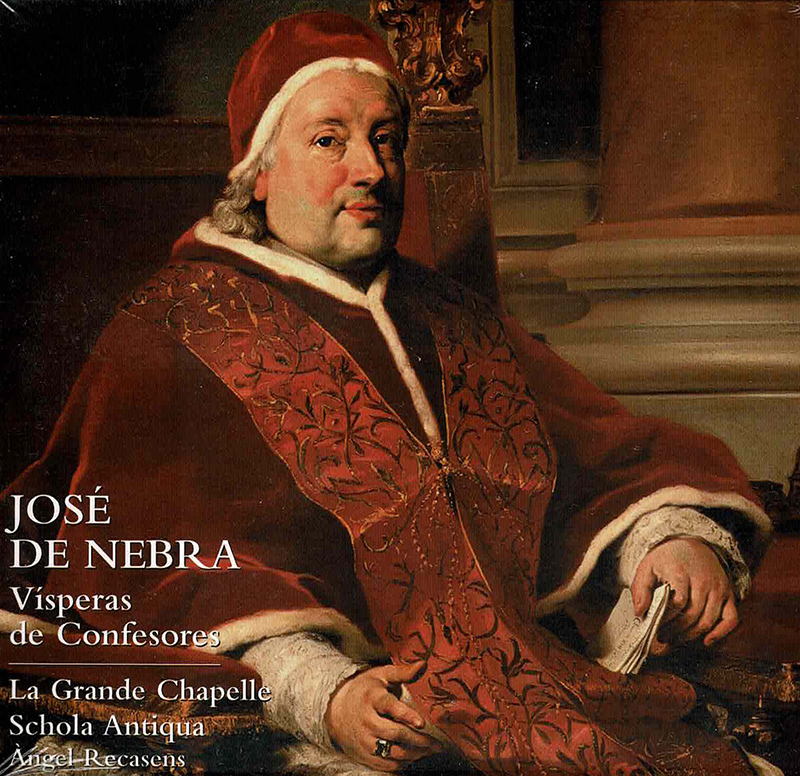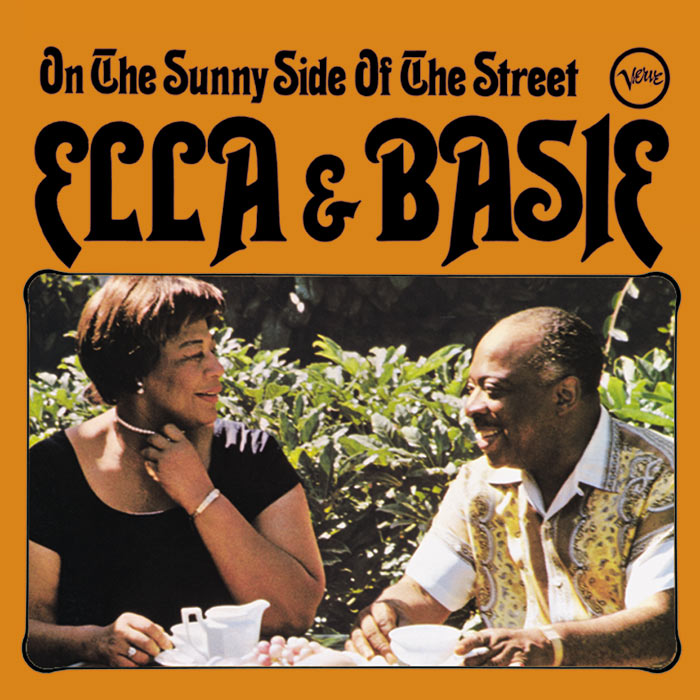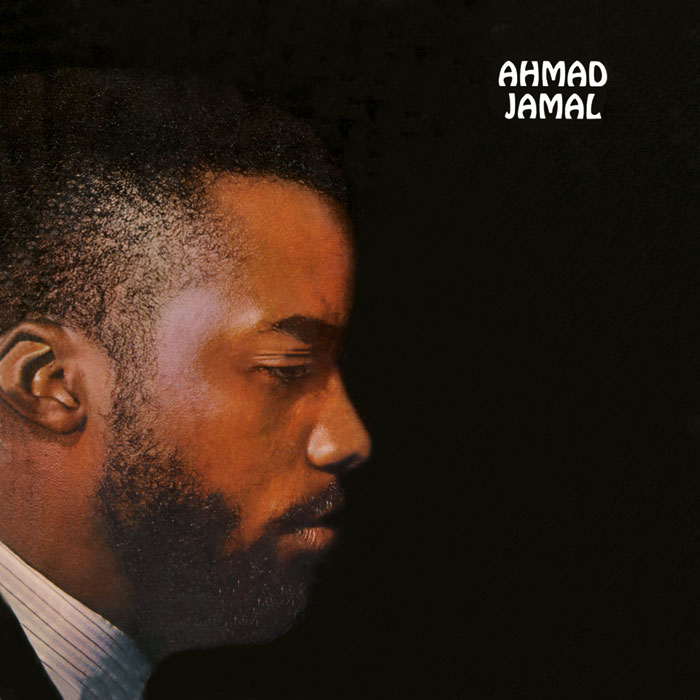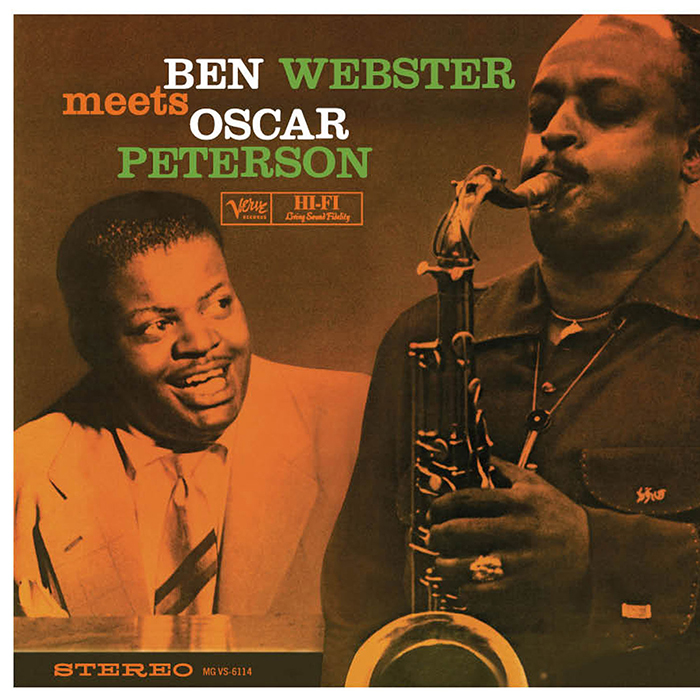Logowanie
Mikołaj - ten to ma gest!
Elton John, The Mamas & The Papas, Cat Stevens, Rod Stewart, Bobbie Gentry, Stevie Wonder, Engelbert Humperdinck
Memory Lane
Edycja Numerowana - 1000 egzemplarzy w skali światowej
RACHMANINOV, Eiji Oue, Minnesota Orchestra
Symphonic Dances / Vocalise
Best Recordings of 2001!!! NAJCZĘŚCIEJ KUPOWANA PŁYTA Z RR!
Karnawał czas zacząć!
Music of Love - Hi-Fi Latin Rhythms
Samba : Music of Celebration
AUDIOPHILE 24BIT RECORDING AND MASTERING
CHOPIN, LISZT, DEBUSSY, DVORAK, Gerhard Oppitz
Dances romantiques - A fantastic Notturno
Wzorcowa jakość audiofilska z Clearaudio
Winylowy niezbędnik
ClearAudio
Double Matrix Professional - Sonic
najbardziej inteligentna i skuteczna pralka do płyt winylowych wszelkiego typu - całkowicie automatyczna
de NEBRA, La Grande Chapelle, Schola Antiqua, Angel Recasens
Vísperas de Confesores
- La Grande Chapelle - Schola Antiqua - Àngel Recasens - José de Nebra: Visperas de Confesores
- 01. Entrada: Verso de vísperas (órgano) (4:59)
- 02. Invocación inicial: Deus in adiutorium (0:54)
- 03. Antífona I: Domine quinque talenta / Salmo I: Dixit Dominus Domino meo, a 4 (7:07)
- 04. Antífona II: Euge serve bone / Salmo II: Confitebor tibi, Domine (6:28)
- 05. Antífona III: Fidelis servus et prudens / Salmo III: Beatus vir, a 4 (7:25)
- 06. Antífona IV: Beatus ille servus / Salmo IV: Laudate pueri Dominum (5:13)
- 07. Antífona V: Vestri capilli / Salmo V: Laudate Dominum, a 4 (3:19)
- 08. Himno: Iste confessor (more hispano) (3:56)
- 09. Antífona del Magnificat: Hic vir despiciens / Magnificat, a 4 (12:54)
- 10. Benedicamus Domino (0:47)
- 11. Salmo: Credidi, a 4 (6:32)
- La Grande Chapelle - orchestra
- Schola Antiqua - choir
- Angel Recasens - conductor
- de NEBRA
 Wszystkie płyty w pięknych digipackach, a te - w specjalnym etui. Bogata i obszerna książeczka ze wszystkimi tekstami wykonywanych utworów.
Niewielkie, wręcz mikroskopijne iberyjskie wydawnictwo płytowe – Lauda – zaczęło wydawać swoje albumy w 2005 r. i ma w dorobku zaledwie 7 płyt, z których pięć mam przed sobą. Może to właśnie ze względu na rozmiary wydawnictwa ich płyty dotarły do nas dopiero teraz. Bardzo interesująco prezentuje się nagranie dzieł sakralnych a cappella (Lauda LAU 004), które skomponował José de Nebra (1702-1768). Kompozytor ten znany jest głównie dzięki zarzuelom, arie z których przypomniała niedawno Harmonia Mundi. Interpretacja zespołów La Grande Chapelle i Schola Antiqua jest bardzo dobra, oddaje w całej krasie piękno tych dzieł, które pozwalają zrozumieć, dlaczego Nebra za życia był ceniony głównie ze względu na swoją twórczość sakralną. Na płycie zarejestrowano odtworzone Nieszpory, w których części a cappella są porozdzielane sporą porcją muzyki organowej. To naprawdę piękna muzyka. Ciekawym jest pierwszy album wytwórni Lauda – Entre aventuras y encantamienteos – Música para don Quijote (LAU 001). Nagranie składa się z dwóch części: muzyki związanej z czasami Don Kichota napisanej przed rokiem 1600, oraz z dzieł, jakich słuchali Alonso Quijano i Cervantes, pochodzących z początków XVII w., w tym bardzo interesujące poematy autorstwa Cervantesa. Na płycie znajdują się również utwory instrumentalne. La Grand Chapelle, którą dyryguje Angel Recasens znakomicie odtworzyła atmosferę tej hiszpańskiej muzyki przełomu XVI i XVII w. Album El Gran Burlador – Música para el mito de Don Juan (LAU 006) przypomina inną postać mityczną, Don Juana. Powstała by upamiętnić 250 rocznicę urodzin Mozarta, oraz by oddać hołd Tirso de Molinie, którego arcydzieło El burlador de Sevilla y convidado de piedra dało światu legendę Don Juana i zainspirowało Lorenza Da Ponte i Mozarta, by stworzyć znakomitego Don Giovanniego. Grupa hiszpańskich znawców literatury i muzykologów połączyła najważniejsze fragmenty sztuki z muzyką tamtych czasów. Wybrano dzieła takich kompozytorów hiszpańskiego baroku, jak Cristóbal Galán, Juan Hidalgo, Bernardo Murillo, Manuel Correa, Manuel de Egüés, a także dzieła anonimowe.
Antonio Rodrígueza de Hita (1722-1787) to bohater kolejnego albumu wydawnictwa Lauda (LAU 005). Zawiera on jego dzieła instrumentalne zawarte w pochodzącym z 1751 r. zbiorze Escala diatónicochromático- enharmónica. Jest to jeden z niewielu istniejących XVIII-wiecznych zbiorów hiszpańskiej muzyki instrumentalnej o przeznaczeniu sakralnym. Wybrane do nagrania utwory są wyjątkowej urody. Siedmiu znakomitych artystów tworzących La Grande Chapelle po raz pierwszy nagrało te dzieła na instrumentach z epoki. Wraz ze znakomitym realizatorem dźwięku stworzyli piękny album, po który powinien sięgnąć każdy meloman. Ostatnim albumem, jaki otrzymałem to El vuelo de Icaro – Música para el eros barroco (LAU 003). Temat Ikara był wielokrotnie poruszany przez hiszpańskich poetów epoki baroku. Często do tych dzieł pisali muzykę tacy kompozytorzy, jak Manuel Correa, Bernardo Murillo, Sebastián Durón, Mateo Romero i Manuel Machado. Utwory te znajdują się w dwóch zbiorach: pochodzącym z 1656 r. manuskrypcie Libro de Tonos Humanos znajdującym się w Bibliotece Narodowej w Madrycie oraz w pochodzącym z początków XVII w. Cancionero Poético-Musical Hispánico de Lisboa, jaki znajduje się w Biblioteca de Ajuda w Lizbonie.
Utwory zostały ułożone w części odzwierciedlającej podróż Ikara: Skrzydła z wosku, Ikar, Słońce, Lot, Upadek.
Wspólnym mianownikiem tych nagrań jest zespół La Grand Chapelle pod dyrekcją Angela Recasensa. Ich wykonanie jest najwyższej próby, zastosowanie instrumentów z epoki jest ogromnym atutem ich interpretacji. Pozwala to słuchaczowi, choć trochę poczuć się jak za dawnych czasów. Te realizacje przywodzą mi na myśl dokonania innej znanej firmy krzewiącej muzykę hiszpańską – Alia Vox. Odnoszę wrażenie, że realizacje Laudy są mniej komercyjne, natomiast bardziej autentyczne. Mam nadzieję, że kolejne ich produkcje będą równie interesujące i będą stały na równie wysokim poziomie.
(cr) Muzyka21 Maj 2009
José de Nebra (1702-1768) is, without a doubt, the most important figure of Spanish music of the mid-eighteenth century. He worked at the Royal Chapel, where he was named first organist, and then vicemaestro in 1751. Starting in the 1720´s, Nebra composed many zarzuelas for the theatres of Madrid, and was also well-regarded as a teacher, training composers such as Antonio Soler, José Lidón, and his nephew, Manuel Blasco de Nebra.
As a consequence of the fire at the Alcázar of Madrid in 1734 that all but destroyed the music archives of the Royal Chapel, Nebra was able to focus on sacred music, which in keeping with the period were written primarily for a double choir and instrumental accompaniment. In this context, the Vísperas del Común de los Santos y de la Virgen (1759), written a cappella in only four parts, is unique. The Vísperas is a collection of psalms and a Magnificat composed for the office of vespers. Nebra had the work copied, richly bound, and sent to the most important cathedrals of Spain, and to the Sistine Chapel as well.
On this occasion, the Grande Chapelle and the Schola Antiqua have reconstructed one of the possible offices, that of the Vespers for the Common of Confessors (not Popes). In addition to the structural elements of the liturgy, the psalmody responds to the practice of alternatim between plainchant, polyphony and "verses" for organ. In addition, the practice of fauxbourdon (Gregorian chant harmonised in homophony) was recovered from eighteenth-century sources for the psalm Confitebor tibi, Domine. All of the music for this first world recording is unpublished and comes from the archives of the Royal Palace, Santiago de Compostela and the Escorial.
In composing the vespers, Nebra deliberately employed a traditionally austere style, in contrast to the rest of his oeuvre. In addition to his complete mastery of counterpoint, Nebra manages to surprise us with his harmonic audacity, dissonances and peculiar sonorities in some of the more deeply expressive passages. On the whole, the serenity, bareness and beauty of the melodic lines prevail.
The interpretation of the Grande Chapelle, comprised on this occasion of four excellent soloists who specialize in oratory and the prestigious organist Herman Stinders, is especially attractive for its impeccable transparency of line and wide array of nuances. The search for expressiveness together with an absolute respect of the content of the text, the balance and tidiness all bear the seal of Angel Recasens, an expert in sacred vocal music. The unmistakable "monastic" sonority of the plainchant passages interpreted by the Schola Antigua under Juan Carlos Asensio lends veracity and dynamism to the liturgical reconstruction. The exquisiteness and delicacy of this version are an awesome revelation of one of the geniuses of eighteenth-century Spain, without the pomp and fuss that often accompany other ventures into the repertory of early Spanish music.
---------------
Rescatando tesoros (Rescuing treasures)
Diario Expansión, 17/02/2007
"Ángel Recasens' work on recovering the early Spanish repertoire is giving results that can only be described as extraordinary.
[…] The care taken over the musical and liturgical aspects, with a desire to be faithful to the discovered original, allows us to relish in this authentic gem of our artistic heritage. An absolutely exceptional recording".
José de Nebra, Vísperas de Confesores (Confessors' Vespers)
Craig Zeichner
Goldberg Magazine, no. 44, February 2007, p. 94.
5 Stars Goldberg
"This recording of José de Nebra's sacred works sung a cappella is a very pleasant surprise.
[…] psalmodies which have been carefully chosen by Asensio and are well performed by Schola Antiqua.
[…] The Beatus vir offers the psalmody in alternatim with polyphonic verses, sung with intensity by the four voices of La Grande Chapelle.
[…] the Magnificat is marvellous, an austere series with some glorious moments of vocal writing of very high quality. This is beautiful and solemn music that, despite its dark colouring, contains passages of priceless serenity".
José de Nebra. Vísperas (Vespers)
Jorge de Persia
La Vanguardia. Culturas, 31/01/2007
"[…] Vísperas de Confesores, a jewel of the Spanish Baroque".
Reconstruir el Barroco español (Reconstructing the Spanish Baroque)
Pablo J. Vayón
Diario de Sevilla, 27/01/2007
"[…] this new disc from Lauda Records offers us a different perspective on the Aragonese composer.
[...] An unpublished repertory magnificently contextualised".
"Laudas" à música antiga espanhola ("Laudas" to early Spanish music)
Cristina Fernandes
Público. Mil Folhas. Música clásica, 29/12/2006, p. 22-23.
"[…] solidly written music with great dignity of expression. Music designed not for the concert hall, but for prayer and Baroque holy ceremonies, offered here with a rigorous and introspective approach".
Sacre i profà (Sacred and Profane)
Xavier Cester
Avui. Cultura i Espectacles, 24/12/2006
"[…] an attractive retrieval of our heritage […]".
Clásica Navidad…discos para regalar (Classical Christmas - discs to give as gifts)
El Mundo. El Cultural,14/12/2006
"A true sacred festival [...] Extreme severity and penetrating emotion are the arms of this performance, in which the Schola Antigua, under the baton of Juan Carlos Asensio, participates with its proverbial decorum, in which polyphonic fragments with a sublime counterpoint stand out. Excellent overall direction by Ángel Recasens".
Vísperas de confesores (Confessors' Vespers)
Alberto González Lapuente
ABC. ABCD las Artes y las Letras, 2/12/2006
"La Grande Chapelle enjoys archaeology. […] We can divine therefore that giving it life has not been easy. Reconstruction means taking decisions. […] An agreeable surprise from 18th century Spain".
La verdad de la pureza (The Truth of Purity)
Arturo Reverter
El Mundo. El Cultural, 23/11/2006
"[…] a true feast of sacred music
[…] within an extreme austerity, an emotion that permeates
[…] the polyphonic pieces, of a sublime counterpoint, entrusted to four voices, in tune and tight, able to reach high degrees of intensity when drawing the gentle melodic lines, to accentuate the dissonances and the chromatisms that enrich the pentagrams, brought together in a unitary and timeless stylistic whole. The use of the falsobordone, with contrasting effects, and the inclusion of organistic 'verses', […] contribute to providing range, variety, and eloquence to the reconstruction".
Wszystkie płyty w pięknych digipackach, a te - w specjalnym etui. Bogata i obszerna książeczka ze wszystkimi tekstami wykonywanych utworów.
Niewielkie, wręcz mikroskopijne iberyjskie wydawnictwo płytowe – Lauda – zaczęło wydawać swoje albumy w 2005 r. i ma w dorobku zaledwie 7 płyt, z których pięć mam przed sobą. Może to właśnie ze względu na rozmiary wydawnictwa ich płyty dotarły do nas dopiero teraz. Bardzo interesująco prezentuje się nagranie dzieł sakralnych a cappella (Lauda LAU 004), które skomponował José de Nebra (1702-1768). Kompozytor ten znany jest głównie dzięki zarzuelom, arie z których przypomniała niedawno Harmonia Mundi. Interpretacja zespołów La Grande Chapelle i Schola Antiqua jest bardzo dobra, oddaje w całej krasie piękno tych dzieł, które pozwalają zrozumieć, dlaczego Nebra za życia był ceniony głównie ze względu na swoją twórczość sakralną. Na płycie zarejestrowano odtworzone Nieszpory, w których części a cappella są porozdzielane sporą porcją muzyki organowej. To naprawdę piękna muzyka. Ciekawym jest pierwszy album wytwórni Lauda – Entre aventuras y encantamienteos – Música para don Quijote (LAU 001). Nagranie składa się z dwóch części: muzyki związanej z czasami Don Kichota napisanej przed rokiem 1600, oraz z dzieł, jakich słuchali Alonso Quijano i Cervantes, pochodzących z początków XVII w., w tym bardzo interesujące poematy autorstwa Cervantesa. Na płycie znajdują się również utwory instrumentalne. La Grand Chapelle, którą dyryguje Angel Recasens znakomicie odtworzyła atmosferę tej hiszpańskiej muzyki przełomu XVI i XVII w. Album El Gran Burlador – Música para el mito de Don Juan (LAU 006) przypomina inną postać mityczną, Don Juana. Powstała by upamiętnić 250 rocznicę urodzin Mozarta, oraz by oddać hołd Tirso de Molinie, którego arcydzieło El burlador de Sevilla y convidado de piedra dało światu legendę Don Juana i zainspirowało Lorenza Da Ponte i Mozarta, by stworzyć znakomitego Don Giovanniego. Grupa hiszpańskich znawców literatury i muzykologów połączyła najważniejsze fragmenty sztuki z muzyką tamtych czasów. Wybrano dzieła takich kompozytorów hiszpańskiego baroku, jak Cristóbal Galán, Juan Hidalgo, Bernardo Murillo, Manuel Correa, Manuel de Egüés, a także dzieła anonimowe.
Antonio Rodrígueza de Hita (1722-1787) to bohater kolejnego albumu wydawnictwa Lauda (LAU 005). Zawiera on jego dzieła instrumentalne zawarte w pochodzącym z 1751 r. zbiorze Escala diatónicochromático- enharmónica. Jest to jeden z niewielu istniejących XVIII-wiecznych zbiorów hiszpańskiej muzyki instrumentalnej o przeznaczeniu sakralnym. Wybrane do nagrania utwory są wyjątkowej urody. Siedmiu znakomitych artystów tworzących La Grande Chapelle po raz pierwszy nagrało te dzieła na instrumentach z epoki. Wraz ze znakomitym realizatorem dźwięku stworzyli piękny album, po który powinien sięgnąć każdy meloman. Ostatnim albumem, jaki otrzymałem to El vuelo de Icaro – Música para el eros barroco (LAU 003). Temat Ikara był wielokrotnie poruszany przez hiszpańskich poetów epoki baroku. Często do tych dzieł pisali muzykę tacy kompozytorzy, jak Manuel Correa, Bernardo Murillo, Sebastián Durón, Mateo Romero i Manuel Machado. Utwory te znajdują się w dwóch zbiorach: pochodzącym z 1656 r. manuskrypcie Libro de Tonos Humanos znajdującym się w Bibliotece Narodowej w Madrycie oraz w pochodzącym z początków XVII w. Cancionero Poético-Musical Hispánico de Lisboa, jaki znajduje się w Biblioteca de Ajuda w Lizbonie.
Utwory zostały ułożone w części odzwierciedlającej podróż Ikara: Skrzydła z wosku, Ikar, Słońce, Lot, Upadek.
Wspólnym mianownikiem tych nagrań jest zespół La Grand Chapelle pod dyrekcją Angela Recasensa. Ich wykonanie jest najwyższej próby, zastosowanie instrumentów z epoki jest ogromnym atutem ich interpretacji. Pozwala to słuchaczowi, choć trochę poczuć się jak za dawnych czasów. Te realizacje przywodzą mi na myśl dokonania innej znanej firmy krzewiącej muzykę hiszpańską – Alia Vox. Odnoszę wrażenie, że realizacje Laudy są mniej komercyjne, natomiast bardziej autentyczne. Mam nadzieję, że kolejne ich produkcje będą równie interesujące i będą stały na równie wysokim poziomie.
(cr) Muzyka21 Maj 2009
José de Nebra (1702-1768) is, without a doubt, the most important figure of Spanish music of the mid-eighteenth century. He worked at the Royal Chapel, where he was named first organist, and then vicemaestro in 1751. Starting in the 1720´s, Nebra composed many zarzuelas for the theatres of Madrid, and was also well-regarded as a teacher, training composers such as Antonio Soler, José Lidón, and his nephew, Manuel Blasco de Nebra.
As a consequence of the fire at the Alcázar of Madrid in 1734 that all but destroyed the music archives of the Royal Chapel, Nebra was able to focus on sacred music, which in keeping with the period were written primarily for a double choir and instrumental accompaniment. In this context, the Vísperas del Común de los Santos y de la Virgen (1759), written a cappella in only four parts, is unique. The Vísperas is a collection of psalms and a Magnificat composed for the office of vespers. Nebra had the work copied, richly bound, and sent to the most important cathedrals of Spain, and to the Sistine Chapel as well.
On this occasion, the Grande Chapelle and the Schola Antiqua have reconstructed one of the possible offices, that of the Vespers for the Common of Confessors (not Popes). In addition to the structural elements of the liturgy, the psalmody responds to the practice of alternatim between plainchant, polyphony and "verses" for organ. In addition, the practice of fauxbourdon (Gregorian chant harmonised in homophony) was recovered from eighteenth-century sources for the psalm Confitebor tibi, Domine. All of the music for this first world recording is unpublished and comes from the archives of the Royal Palace, Santiago de Compostela and the Escorial.
In composing the vespers, Nebra deliberately employed a traditionally austere style, in contrast to the rest of his oeuvre. In addition to his complete mastery of counterpoint, Nebra manages to surprise us with his harmonic audacity, dissonances and peculiar sonorities in some of the more deeply expressive passages. On the whole, the serenity, bareness and beauty of the melodic lines prevail.
The interpretation of the Grande Chapelle, comprised on this occasion of four excellent soloists who specialize in oratory and the prestigious organist Herman Stinders, is especially attractive for its impeccable transparency of line and wide array of nuances. The search for expressiveness together with an absolute respect of the content of the text, the balance and tidiness all bear the seal of Angel Recasens, an expert in sacred vocal music. The unmistakable "monastic" sonority of the plainchant passages interpreted by the Schola Antigua under Juan Carlos Asensio lends veracity and dynamism to the liturgical reconstruction. The exquisiteness and delicacy of this version are an awesome revelation of one of the geniuses of eighteenth-century Spain, without the pomp and fuss that often accompany other ventures into the repertory of early Spanish music.
---------------
Rescatando tesoros (Rescuing treasures)
Diario Expansión, 17/02/2007
"Ángel Recasens' work on recovering the early Spanish repertoire is giving results that can only be described as extraordinary.
[…] The care taken over the musical and liturgical aspects, with a desire to be faithful to the discovered original, allows us to relish in this authentic gem of our artistic heritage. An absolutely exceptional recording".
José de Nebra, Vísperas de Confesores (Confessors' Vespers)
Craig Zeichner
Goldberg Magazine, no. 44, February 2007, p. 94.
5 Stars Goldberg
"This recording of José de Nebra's sacred works sung a cappella is a very pleasant surprise.
[…] psalmodies which have been carefully chosen by Asensio and are well performed by Schola Antiqua.
[…] The Beatus vir offers the psalmody in alternatim with polyphonic verses, sung with intensity by the four voices of La Grande Chapelle.
[…] the Magnificat is marvellous, an austere series with some glorious moments of vocal writing of very high quality. This is beautiful and solemn music that, despite its dark colouring, contains passages of priceless serenity".
José de Nebra. Vísperas (Vespers)
Jorge de Persia
La Vanguardia. Culturas, 31/01/2007
"[…] Vísperas de Confesores, a jewel of the Spanish Baroque".
Reconstruir el Barroco español (Reconstructing the Spanish Baroque)
Pablo J. Vayón
Diario de Sevilla, 27/01/2007
"[…] this new disc from Lauda Records offers us a different perspective on the Aragonese composer.
[...] An unpublished repertory magnificently contextualised".
"Laudas" à música antiga espanhola ("Laudas" to early Spanish music)
Cristina Fernandes
Público. Mil Folhas. Música clásica, 29/12/2006, p. 22-23.
"[…] solidly written music with great dignity of expression. Music designed not for the concert hall, but for prayer and Baroque holy ceremonies, offered here with a rigorous and introspective approach".
Sacre i profà (Sacred and Profane)
Xavier Cester
Avui. Cultura i Espectacles, 24/12/2006
"[…] an attractive retrieval of our heritage […]".
Clásica Navidad…discos para regalar (Classical Christmas - discs to give as gifts)
El Mundo. El Cultural,14/12/2006
"A true sacred festival [...] Extreme severity and penetrating emotion are the arms of this performance, in which the Schola Antigua, under the baton of Juan Carlos Asensio, participates with its proverbial decorum, in which polyphonic fragments with a sublime counterpoint stand out. Excellent overall direction by Ángel Recasens".
Vísperas de confesores (Confessors' Vespers)
Alberto González Lapuente
ABC. ABCD las Artes y las Letras, 2/12/2006
"La Grande Chapelle enjoys archaeology. […] We can divine therefore that giving it life has not been easy. Reconstruction means taking decisions. […] An agreeable surprise from 18th century Spain".
La verdad de la pureza (The Truth of Purity)
Arturo Reverter
El Mundo. El Cultural, 23/11/2006
"[…] a true feast of sacred music
[…] within an extreme austerity, an emotion that permeates
[…] the polyphonic pieces, of a sublime counterpoint, entrusted to four voices, in tune and tight, able to reach high degrees of intensity when drawing the gentle melodic lines, to accentuate the dissonances and the chromatisms that enrich the pentagrams, brought together in a unitary and timeless stylistic whole. The use of the falsobordone, with contrasting effects, and the inclusion of organistic 'verses', […] contribute to providing range, variety, and eloquence to the reconstruction".

































